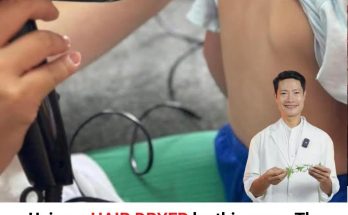Reuse Your Milk Carton for This Handy Homemade Recipe
Do you ever consider reusing your empty milk cartons rather than tossing them away? Have you ever given this any thought? These multipurpose containers have the potential to be of great service in the home if one is willing to put in a little bit of effort. It is possible to manufacture handmade soap out of a milk carton, which is a fantastic way to repurpose the carton. Not only will you end up with a wonderful product, but you will also be able to cut down on the amount of waste you produce. Learn how to transform an old milk carton into a mould for making handmade soap. This will not only save you from having to go to the shop, but it will also provide you with a project that is both enjoyable and useful.
Advantages of Making Your Own Soap
- Producing your own soap gives you the ability to exercise control over the components, allowing you to steer clear of the additives and preservatives that are typically contained in purchased goods. This project is not only a satisfying endeavour, but it also has the potential to be a nice gift or a personal pleasure for yourself. To add insult to injury, recycling and being more environmentally conscious can be accomplished by utilizing a milk carton as a mold.
What You Will Call for
- Empty milk carton: Ensure that it is clean and dry before using it.
- For the basis of the soap, you can use glycerin or any other melt-and-pour base that is available at home improvement stores.
- When it comes to essential oils, pick your preferred aromas.
- Additives: For exfoliation, you might want to think about using dry herbs, oats, or coffee grounds.
- Microwave or boiler with two boilers
- Using a Spoon or Stirring Stick
Details to follow
- The first step in preparing the milk carton is to remove the top of the milk carton. This will make it much simpler to pour the soap mixture inside. For the purpose of ensuring that the carton maintains its shape after being filled, you can consider applying some tape to the exterior of the carton if it is somewhat fragile.
- The second step is to melt the soap base. To do this, chop the soap base into small pieces and then heat it in a microwave or a double boiler in a gentle manner. In the event that you are using a microwave, heat the base in brief intervals while stirring periodically until it is completely melted.
- 3. Add Perfumes and Additional Ingredients: Once the soap base has melted, add a few drops of the essential oils that you have selected. There are also additional natural ingredients that can be used, such as oats or dried lavender, to enhance the texture and characteristics of the dish.
- 4. Carefully pour the melted soap mixture into the milk carton that has been prepared. Carefully pour the mixture into the carton. It is important to make sure that there are no air bubbles and that the mixture is even by tapping the carton gently on the counter.
- 5. Allow It to Set: Set the soap aside for a few hours or overnight so that it can cool down and become more solid. To ensure that it sets correctly, put it in a place that is both chilly and dry.
- As soon as the soap has reached the desired consistency, remove it from the milk carton and cut it into bars. A thread or a knife with a sharp edge can be used to make a smooth cut through it.
Final Thoughts
- Through the utilization of your milk carton in this inventive manner, you not only get the opportunity to experiment with the straightforward craft of soap manufacturing, but you also make a contribution to the reduction of waste. Soap that you make yourself is not only kind to your skin, but it can also be formulated with the components that you like most, making it a joyful addition to your kitchen or bathroom. I encourage you to give this project a shot and experience the sense of accomplishment that comes from creating something beautiful and functional out of something as mundane as a milk carton.



